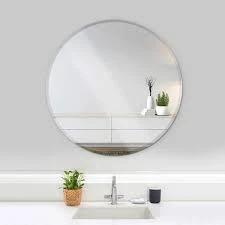

Understanding the Types of Float Glass
Float glass is a widely utilized glass product renowned for its exceptional quality and versatility. The float glass manufacturing process, developed in the 1950s, involves floating molten glass on a bed of molten tin to create a uniform thickness and a flawless surface. Due to its clear properties and smooth finish, float glass has become the cornerstone of the glazing industry, making it essential in applications ranging from architecture to automotive. In this article, we will explore the various types of float glass, their unique characteristics, and their applications.
Standard Float Glass
Standard float glass is the most common type and is produced in various thicknesses, typically ranging from 2 mm to 19 mm. It exhibits high transparency and excellent light transmission, making it ideal for windows, facades, and shop displays. This type of glass is not treated and is used for standard applications where basic strength and clarity are required. The principal advantage of standard float glass is its affordability and availability.
Tinted Float Glass
Tinted float glass incorporates metallic oxides during the manufacturing process to create a range of colors, including grey, bronze, and blue. This type of glass is primarily used to reduce glare, enhance privacy, and improve solar control by absorbing certain wavelengths of light. Tinted float glass is a popular choice for commercial buildings, residential homes, and automotive applications, providing both aesthetic appeal and energy efficiency.
Low-E Float Glass
Low-emissivity (Low-E) float glass features a special coating that reflects infrared radiation while allowing visible light to pass through. This technology significantly improves a building's energy efficiency by minimizing heat loss during winter and reducing solar heat gain during summer. Low-E float glass is commonly used in high-performance windows and facades, making it a fundamental component for energy-conscious construction and renovation projects.

Laminated Float Glass
Laminated float glass is created by sandwiching a layer of polyvinyl butyral (PVB) or ethylene-vinyl acetate (EVA) between two sheets of standard float glass. This design enhances the glass's safety properties, making it less likely to shatter upon impact. The laminated layer also provides acoustic insulation, making it ideal for use in noise-sensitive areas. Common applications include skylights, glass roofs, and safety glass for automobiles.
Insulated Float Glass
Insulated float glass, or double-glazed glass, consists of two or more glass panes separated by a spacer and hermetically sealed to create an insulating air space. This design effectively improves thermal performance and reduces energy consumption in buildings. Insulated float glass is frequently used in residential and commercial windows, enhancing comfort levels by minimizing heat transfer and noise infiltration.
Patterned Float Glass
Patterned float glass has a textured surface designed to obscure vision while still allowing light to pass through. This type of glass is often used for decorative purposes or where privacy is essential, such as in bathrooms or office partitions. The various patterns can be created by pressing or rolling the glass during production, resulting in unique designs that cater to different aesthetic preferences.
Conclusion
Float glass, with its diverse range of types and applications, plays a crucial role in modern architecture and daily life. From standard and tinted options to advanced products like Low-E, laminated, insulated, and patterned float glass, each type brings distinct benefits tailored to specific needs. As technology continues to advance, the future of float glass will likely see innovations that enhance its properties further, making it an even more valuable resource in the construction, automotive, and design industries. Whether you are an architect, a builder, or a homeowner, understanding the different types of float glass can help you make informed decisions for your projects, ensuring functionality, efficiency, and aesthetic appeal.